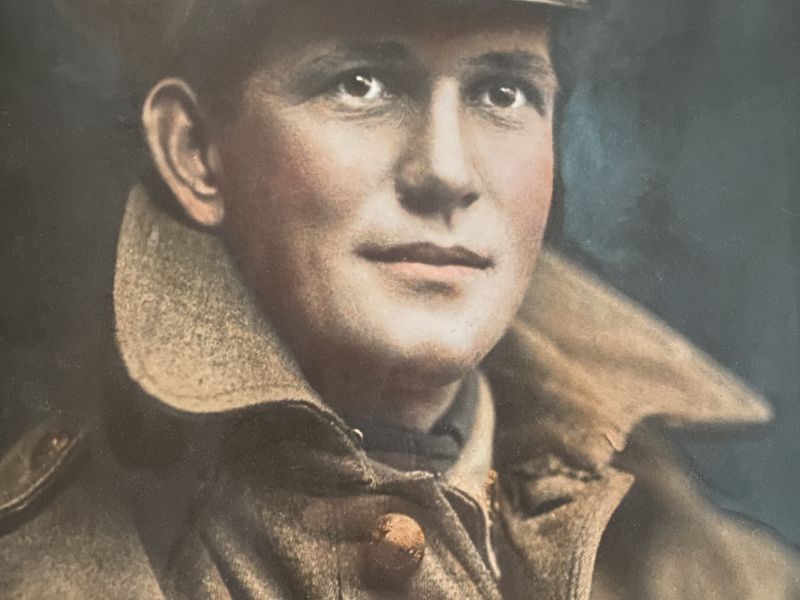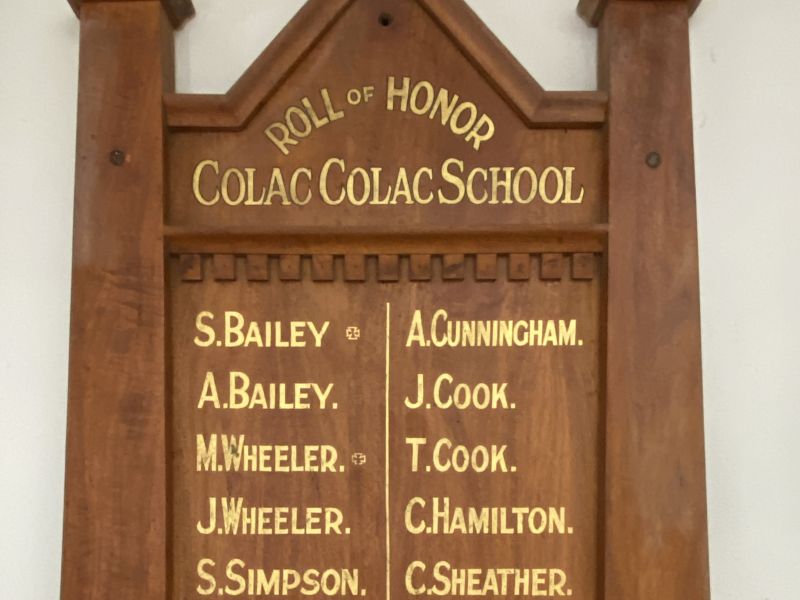James Mark Wheeler
Mark was born in 1891 at Corryong, Victoria. He was the youngest of seven children born to Charles Henry and Jane (née Bell) Wheeler. The family lived at “Currajong '' at Colac Colac. Mark’s mother passed away in 1895 when he was only four years-old. In 1910 Charles passed away. Mark attended Colac Colac State School (No. 2962) and Corryong State School (No. 1309)
According to the 14th of September 1916 edition of the Corryong Courier, Mark had been successful as a jockey, having ridden in most local events. The 1913 Electoral Roll shows that Mark was living at home in Corryong working as a grazier. By the following year he had moved to Station St, Caulfield and had gained employment as a chauffeur and a horse trainer. It is also apparent from the Electoral Roll that Mark was living with his brother Charles and his wife Ethel. The Wheeler boys must have been excellent trainers as one of Charle’s horses, “The Parisian” not only won the 1911 Melbourne Cup but also the Australian Cup of the same year.
Mark underwent his medical examination in Melbourne on the 5th of July 1915. One month later he completed his attestation form and took his oath of service. He was 24 when he enlisted and gave his eldest brother Charles as his next of kin. He was given the rank of private, allotted the Regimental Number 2479 and placed into the 5th Reinforcements for the 23rd Battalion.
It was late September of 1915 when the 5th Reinforcements embarked on HMAT Osterley at the Port of Melbourne. Also onboard was the 5th Reinforcements for the 22nd Battalion. Arriving in Egypt Mark was taken on strength with the 23rd Battalion at Tel-el-Kebir on the 1st of November. Training continued in Egypt until the 19th of March 1916, when the battalion boarded HMT Lake Michigan at Alexandria and sailed to join the British Expeditionary Forces at the Western Front.
The battalion arrived at the front line on the 10th of April, where it occupied forward trenches of the Armentieres sector in northern France. While this area was relatively quiet compared to the rest of the front, the battalion suffered some casualties through German artillery fire. The weather during this time was very cold and wet. After ten days in the front line the battalion was placed in the Reserve lines at Erquinghem. Mark was able to have his first hot bath for some time. On the 22nd of April they were back in the front line. The trenches were in a bad state due to the heavy rain, which also made communications very difficult. Two times a day Mark, and the rest of the battalion, were called upon to “stand to”. This occurred between 0345 and 0445 hours and 1845 hours and 1930 hours. Dawn and dusk were believed to be the prime times for the enemy to attack, so it was important for all men to be awake and prepared.
A little over two weeks later Mark was charged with having lost two pieces of his kit, a greatcoat and waterproof sheet. He was made to pay for the cost of replacement which amounted to £1/6/9d ($152 by today’s prices) for the coat and 6/9d ($39 by today’s prices) for the waterproof sheet.
May and June saw the battalion taking their turn in the front line and reserve. It allowed the men to experience hot baths, a change of underwear and socks, and to enjoy eggs and chips cooked in the local cafes or estaminets. Coffee and the local vin blanc or vin rouge (white or red wine) were also enjoyed. Being in the reserve line was not always restful as the men were frequently employed in fixing trenches, carrying food and materiel up to the front and attending courses.
On the 6th of July the commanding officer of the 23rd, Lieutenant Colonel George Knox, received orders to proceed to Lealvilliers in preparation for the coming operation against the fortified village of Pozieres in late July.
The final entry in Marks “Casualty Form - Active Service” is “Killed in Action”. There is no explanation as to how, or exactly where, he died. Unlike Alf Waugh, Mark's body was found and buried in a known grave in the Pozieres British Cemetery at Ovillers-La-Boisselle, France.
The 14th of September 1916 edition of the Rosedale Courier included the following article about Mark;
"PRIVATE MARK WHEELER
It was with great regret that the people of Rosedale learnt last week that Private Mark Wheeler had been killed in action. Private Wheeler enlisted from Rosedale about sixteen months ago. Prior to volunteering he was employed by Mr J. Widdis, of “Nambrok '', as a trainer. While there he trained Patrobas as a two-year old until the colt was handed over to his brother, Chas Wheeler, the well known trainer, who purchased Patrobas for Mr. Widdis. Mark was of chatty disposition, which made him very popular, and those who were personally acquainted with him could not help admiring his character and smiling at his witty remarks. He was a member of the 23rd Battalion, and took part in the recent “big push”, through which he went untouched. This is the second member of the Rosedale Rifle Club who has laid down his life for his country. The flag at the shire hall was flown at half-mast. Private Wheeler was a single man, aged about 23 years, and who was a brother of Ben Wheeler, who is employed at “Nambrok”.”
Mark is also remembered on the Australian War Memorial Roll of Honour, the Colac Colac School Roll of Honour, and the Corryong War Memorial. For his service during the First World War, he was awarded the 1914-1915 Star, the British War Medal and the Victory Medal.
On Sunday the 26th of May, 1918, a dedication service for Mark took place at All Saint Anglican Church in Corryong. At his service the Mark’s family presented an Eagle Lectern to the church in memory of him.

 Stephen Learmonth
Stephen Learmonth
